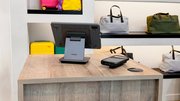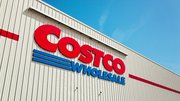Article
E-tail clinic: The new CircuitCity.com
The electronics retail brand has been revived online by Systemax — so what is it like for customers?

July 15, 2009
Expectations, from a design perspective, were quite low as I typed the Circuit City URL into my browser. That's because most of these types of stores have, historically, simply digitized their paper catalogs. The design language remains consistent across paper and pixels in this world. There has been little or no design evolution with our leap into digital. This could of course be a case of "if it ain't broke" but I suspect that it has more to do with old dogs and new tricks.
This is the territory of "Sale" starbursts and "Hurry Up" and "Limited Time" offers that assault the eyeball twenty times on every page. So little white space, offers being thrown at me left right and center. It's all too much to take in ... where should I look?If one highlights two or even three elements on a page, they do indeed draw the eye upon arrival. However, if one highlights 50 percent of the elements on a page, the result tends to be that nothing actually stands out at all. You have achieved the exact opposite of your objective.
When looking at the new site, there are a few good points of note.
The navigation system is logical, consistent and easy to use. You will find what you are looking for quite easily. The bread crumb is also present, an aid in usability. On a product category page (e.g. laptops) the left margin is dedicated to refining your search, via screen or hard drive size, processor, brand or battery type. This is all good stuff but nothing that competitors aren't also offering, so not really a point of differentiation or advantage. The shipping calculator is a good and necessary addition.
One click further in and I'm on a product detail page. Here I find the expected price confirmation, product summary, technical spec table and also, it seems, any bit of related content they could find to throw on top. The page scrolls on and on with information on everything from tax rebates to reasons why you might be suffering from less hard drive space than the next chap.
 In the left margin they offer me alternative notebooks, similarly priced. In the right margin they offer me software, memory cards and other related items. This is all distracting me from that all-important click on the "Add to Cart."
In the left margin they offer me alternative notebooks, similarly priced. In the right margin they offer me software, memory cards and other related items. This is all distracting me from that all-important click on the "Add to Cart."
Now, of course I see the sense and value in offering related products but there is a time and place for everything. I would love to see the stats on users that clicked on a software offer from a hardware product page right before checking out. Do they buy the software, do they go back and buy the laptop too, do they buy neither?
My personal philosophy is "ABC" — Always Be Closing. Focus on selling me the laptop, remove these other distractions, and don't provide so many doors for me to walk out through. You can always sell me the laptop bag, memory, books and backup solution a step or two further on, when I have actually committed to buying the laptop and may have use for these items.
In the real world this experience might equate to a wander through a Moroccan market with vendors shouting, pointing and thrusting their wares within inches of your face. It's certainly not a calm environment where a helpful sales person listens before talking and then carefully considers which product might best suit my needs.
So what could they be doing better?
At first glance the competition sites are all remarkably similar in terms of design, structure and functionality. Upon closer inspection one begins to notice a few small but important differences here and there, and these, I think, may hold the key to future success in the online retail electronics marketplace.
Best Buy has a "Laptop Discovery Tool" — basically a little app that enables you to compare products side by side. One can of course compare laptops on the Circuit City site by checking a couple of items and hitting "compare," which gives you a table with the specs side by side. So what's the difference? The key is in the design and presentation and the all important feelings and perceptions those things create. The Best Buy tool makes it feel like they are trying to help me, they are listening to what I want and trying to serve me accordingly.
J&R offers a curated shopping experience via their "Boutiques." These are sections like "Summer Fun" with aggregated product offerings along a theme. They also have their own brand landing pages which enables them to include promotional areas on these brand home pages. Shopping by brand on Circuit City is just a filtering of your results page.
Sony Style offers to "help me choose" and their Vaio Advisor asks me a series of questions before offering a solution. Simple stuff and nothing new but this is quite important.
We now live in the world of the "empowered consumer" and in the ADD society. We all know that people can and do put much effort into researching significant purchases online before opening their wallets. With the introduction of Google Shopping, commoditization has accelerated further. Once I have established that the Sony Bravia KDL 52S5100 is what I need, I, like most consumers, will shop around the best price possible. It's the same Sony, after all, no matter where I buy it.
So Circuit City, if your prices are as low or lower than everyone else, ignore what I say, leave the site as it is, spend your money on search marketing and good luck to you. If better deals may be found elsewhere, you might want to think about organizing and packaging up all that content and developing some tools and applications to better serve your customers and differentiate yourselves from the competition. In this commoditized world, the most useful sites with the most rewarding experiences might be the ones that retain a little loyalty and keep their visitors coming back to see more than just the price — in huge red text with a line through it, alluding to the fact it might be even cheaper one click inside!
Jay Alger is managing partner of Deepend New York, a Web design firm whose clients include Schick, Taco Bell, AOL, ESPN, Time Warner and more.






